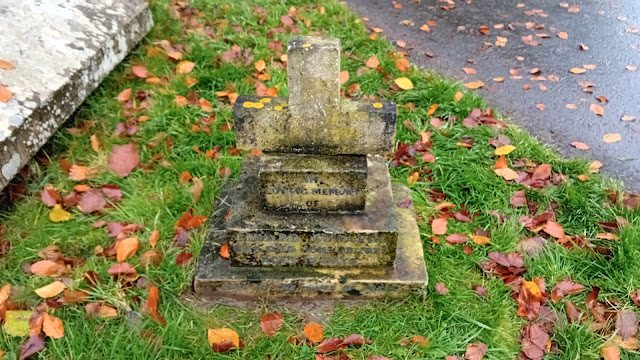Churches used by the Edwards and Price Families
Cwmdeudwr Church
(St Brides)
(Eglwys y Santes Ffraid, Llansanffraid Cwmdeuddwr)
This Church was the nearest to New House farm and the churchyard contains many gravestones of the Edwards family including John Edwards. Though the parish
church of St Bride is a Victorian building, its history goes back long before that. The
churchyard is a circular prehistoric site. The dedication to St Bride is linked to a sacred
well just outside the churchyard.
Though the parish
church of St Bride is a Victorian building, its history goes back long before that. The
churchyard is a circular prehistoric site. The dedication to St Bride is linked to a sacred
well just outside the churchyard.
In the late 12th
century the church was where Lord
Rhys, the Welsh Prince, called a
ceremonial gathering to grant a huge swath of land between Aberystwyth and
Rhayader of land to the monks of Strata
Florida Abbey.
The churchyard has many excellent 19th-century gravestones.
Traditionally Cwmdauddwr residents were buried on one side of
the churchyard path and Elan Valley
families on the other. John Wesley,
the founder of Methodism, preached
here in 1746.
Near the east end
of the church, you can see remains
of stone foundation walls of an
earlier church. The most interesting remnant
of that earlier building is a fascinating holy
water stoup in the porch, where
worshippers would pause to wash their hands before entering. The stoup is
carved with several very crude heads.
One head is significantly smaller than the others and may represent a child.
Inside the church there is an ironwork rood screen and a carved
stone reredos behind the altar. There are numerous plaques brought here from Nantgwillt
Church when it was submerged to
make way for the Elan Valley dams.
One of those plaques commemorates
the pioneering Victorian mountain
climber Emmeline Lewis-Lloyd who
lived in the, now drowned, manor house at Nantgwillt.
Unfortunately, the church is normally kept locked, but even if it is closed you can still see the
holy water stoup in the porch.
Rhayader Church
(St Clement's)

Rhayader church stands on high ground overlooking the River Wye. Its original dedication was to Cynllo, a 5th-century Welsh saint which indicates a very early foundation. It was later associated with Rhayader Castle, the site of which is very close.
The medieval church collapsed
in 1772 and was rebuilt on a rectangular plan. It was again rebuilt from 1887-1897.
The oldest historical feature to survive the rebuilding is an early medieval font. The font bowl is carved with four, very worn, faces
that project from the stone. Almost all the other furnishings are late Victorian, including a stone pulpit in Gothic style and a
beautifully carved wooden screen.
The churchyard has several 18th-century graves. The church itself is often open.
One of the skeletons
had an enormous thighbone measured
at over a metre in length. The thighbone is said to have been that of
the castle's commanding officer. Because of this the mass grave is known as The Giant's Grave.
Rhayader Chapel
Tabernacle United Reformed Chapel
This is the chapel that was used by the Price Family. Beatie married George Edwards here and both Tutsy and Ben Price are buried here. (The grave is at the back of the church, which drops away steeply to a large graveyard).
The Tabernacle United
Reformed Chapel was built in 1721,
rebuilt in 1778 and again in 1836.
The present chapel, dated 1836, is
built in the Simple Gothic style to
the design of architect T. Hope. It has a gable-entry and mid-nineteenth century and later internal fittings, and is now Grade 2 Listed.
Hamnish Church
(St Dubricius and All Saints)
 This is the church used by Charles Edwards and family when they farmed at Hamnish, Steens Bridge and Widgeon Hill. It contains a brass memorial plaque to Robert Jarman Edwards who was killed in the First World War.
This is the church used by Charles Edwards and family when they farmed at Hamnish, Steens Bridge and Widgeon Hill. It contains a brass memorial plaque to Robert Jarman Edwards who was killed in the First World War. Stoke Prior Church
(St Luke)

The present church was built in 1863 replacing a Norman church with a massive tower and a boarded steeple.
It has a 17th century hammer beam roof which was retained and some interesting old wall monuments. It also has a nice Benefactor's Board.
Kimbolton Church
Kimbolton Church stand on a hill and the spire can be seen from a long distance. The chancel is Norman and the nave is thirteenth century. The Tower was probably built in the thirteenth century and is topped by a timber brooch spire finished in oak shingles which is over ninety feet high.
 St Michael's is an attractive old church with an interesting, external Chantry Chapel, called the Volka Chapel accessed from the Porch. The church is usually open to visitors.
St Michael's is an attractive old church with an interesting, external Chantry Chapel, called the Volka Chapel accessed from the Porch. The church is usually open to visitors. 


























